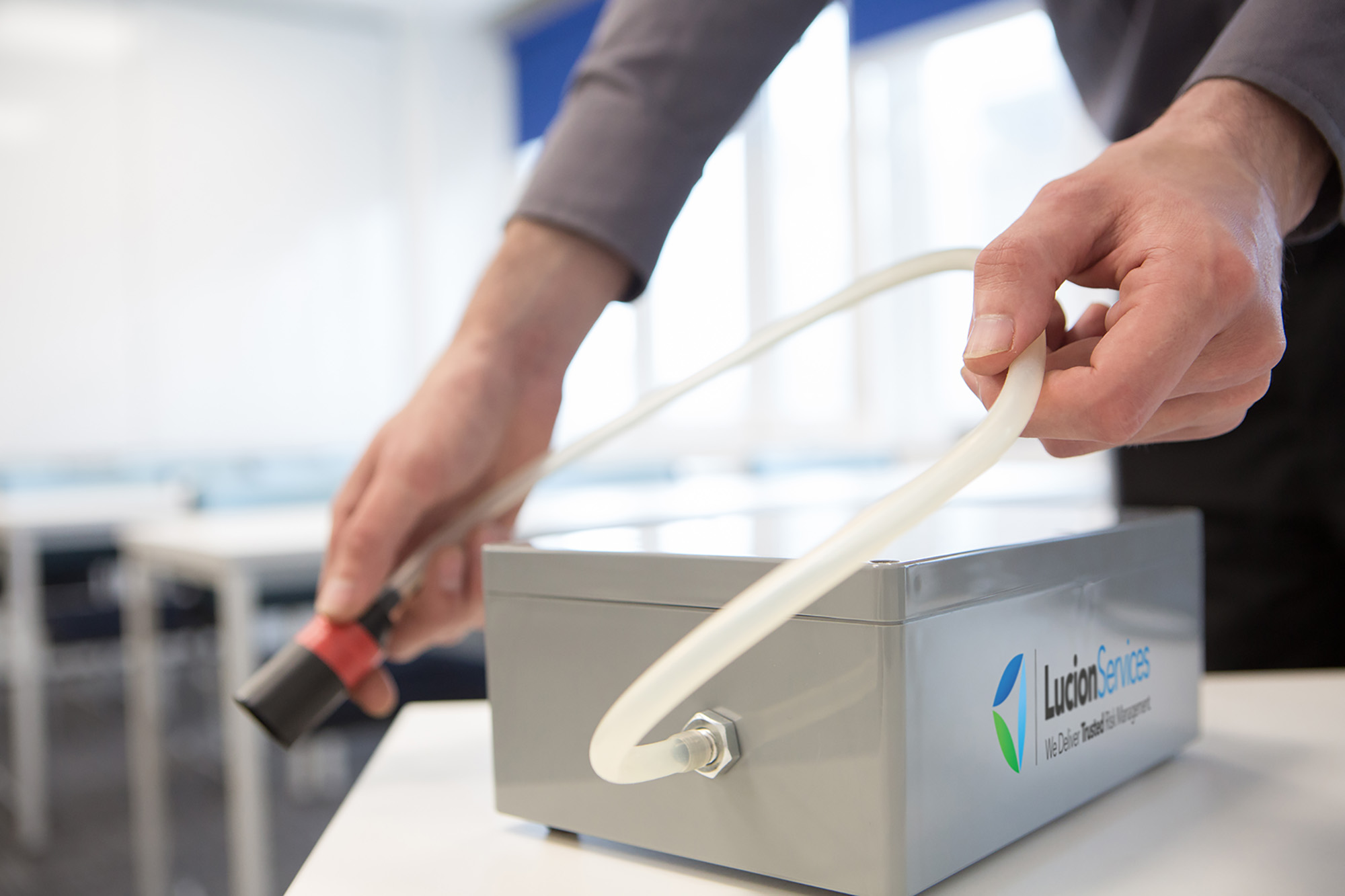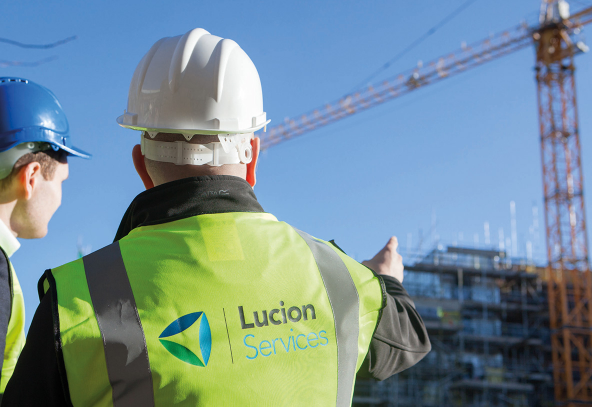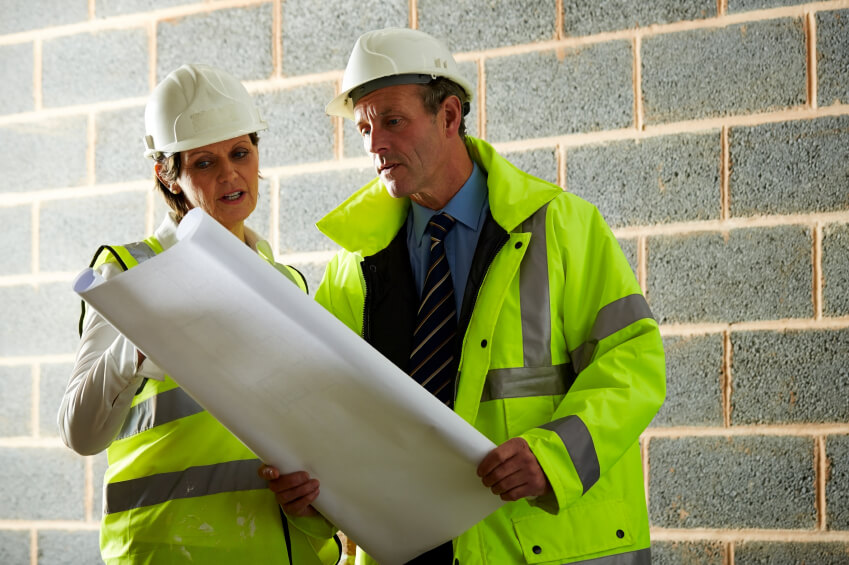You've Planned For Asbestos Works During Your Modernisation Project, But Have You Planned For Air Testing And Monitoring?
25 March 2020
During the periods of 1920 – 1970 and 1971-2000, Europe used 48% and 58% of the entire world’s tradings of asbestos, arguably making Europe the historical global centre of asbestos use; the UK, Germany, and France being the highest importers*.
In the 1950s, the 60s and 70s there was a ‘building boom’ within the UK, in which amosite asbestos was used inside many public buildings as insulation/insulative products and chrysotile asbestos was used in the cement and cladding of the outside of buildings.
Subsequently, the highest amount of asbestos-related diseases and resulting deaths are currently associated with European countries. Deaths relating to asbestos diseases including; mesothelioma, asbestosis and lung cancer currently reside at over 5000 per year in the UK**(2017-2018). As of 2017, there are around 2,500 mesothelioma deaths in the UK every year***.
The Need To Know The Risks
Much of amosite and crocidolite asbestos imported and manufactured in the UK was installed into buildings during the post-war period. Asbestos was used in buildings where there was an increased need for fire protection, such as schools, hospitals and government buildings etc. So what does this mean for the UK and individuals residing in public buildings that were built before the ban of the use of asbestos in buildings in 2000?
The asbestos, when first installed, was perceived to be less of an issue and threat to occupants within these buildings as less was known about the health risks associated with asbestos usage. Asbestos that is in good condition and well managed (regularly surveyed to assess the condition of the asbestos, the use of appropriate signage, robust management procedures and relevant training in place to protect individuals from dangers) can be considered a low-level/manageable risk. However, many UK schools, universities, hospitals and public buildings, are not adequately maintained and are slowly degrading. The asbestos within these buildings is also degrading and can now be posing health risks to the building occupants.
How Can We Tackle The Issue?
The current standard airborne fibre analysis methodology most commonly used by the UK is Phase Contrast Microscopy (PCM). A technique developed in the early 1960s offered by many asbestos management companies. This method is currently used to measure fibre concentrations in the air in accordance with HSE statutory clearance levels but is rarely used to assess fibre levels below the clearance indicator and only measures respirable fibres i.e. does not discriminate between asbestos and non-asbestos fibres.
In order to conduct effective reassurance air testing and monitoring that goes far beyond the current HSE’s regulations of 0.01 f/ml and matches those of other European countries who are actively combatting their asbestos-related diseases, Lucion has invested in Scanning Electron Microscopy (SEM) technology with the capability to effectively assess the asbestos fibre concentration in the air. The benefit of this is that actual asbestos airborne fibre levels can be quantified and low-level background fibre concentrations can be understood and used to assess the impact of low-level background asbestos exposure for long periods of time.
Should We Remove All Asbestos From All Buildings?
The reality is that we can not remove all asbestos from buildings, so we need to use the best techniques to manage it in-situ, whilst targeting our resources to prioritise the removal of other higher-risk ACM’s first Through effective air testing and monitoring, the UK can manage their asbestos in situ (leaving the asbestos where it is but managing and protecting the asbestos-containing materials, preventing exposure). Managing asbestos in situ using effective SEM reassurance testing methods is a cost-effective and realistic solution to help manage the amount of asbestos present in public buildings.
Many organisations call for the complete removal of asbestos from all buildings nationwide. To put this in perspective, over 70% of schools within the UK are likely to contain asbestos-containing materials. To remove these potentially lethal materials is just not feasible due to costs and also the unnecessary removal of certain ACM’s often creates a higher exposure risk than managing correctly in situ.
Following removal, landfill is currently the only commercially viable disposal method and the impact of burying large quantities of carcinogenic material that can still be successfully managed in situ (not forgetting the associated costs), is another ethical decision that duty holders face.
As a UKAS ISO 17025 accredited, trusted supplier of SEM testing and the UK market leaders in asbestos management, Lucion offers a specialised service, using an in-house SEM resource providing clients with greater risk management capabilities during air monitoring work, in occupied buildings or in external environments during land remediation. Be more than just compliant, with best-practice SEM air testing and monitoring.
Steve Walker, Senior Consultant, Head of Asbestos Services
*statistics taken from the white paper “Why The UK Should Have Tighter Asbestos Controls”, Charles Pickles, 2018.
**Statistics from HSE: http://www.hse.gov.uk/statistics/causdis/asbestos-related-disease.pdf
***Statistics from Cancer Research UK: https://www.cancerresearchuk.org/health-professional/cancer-statistics/statistics-by-cancer-type/mesothelioma
Tool Box Talk: Asbestos Awareness
As part of Lucion’s Take Care Be Aware initiative, we actively take care of our health and safety responsibilities, with continuous awareness of our commitments to knowledge share and educate.
In doing so we have created a ‘toolbox talk’ on asbestos awareness to raise awareness of the hazards associated with asbestos-containing materials, enabling safety professionals to share knowledge and overall save the time and effort in producing them for you and your teams.
_2.png)
Download From NexGen
10 Steps To Asbestos Remediation
Puzzled by what is involved in the asbestos remediation process? Read our quick 10 step guide to your asbestos remediation project.
_1.png)
Download From NexGen
Asbestos Management Plan: 12 Step Checklist
Struggling to get started with your Asbestos Management Plan? Download our free 12 step AMP Checklist Guide and take the first step to safeguard your teams, contractors, and reputation.
No Sign-Up Required


 NexGen
NexGen











